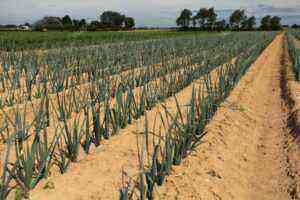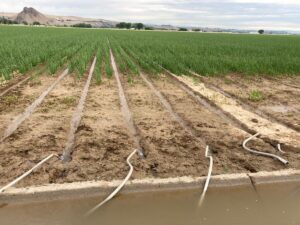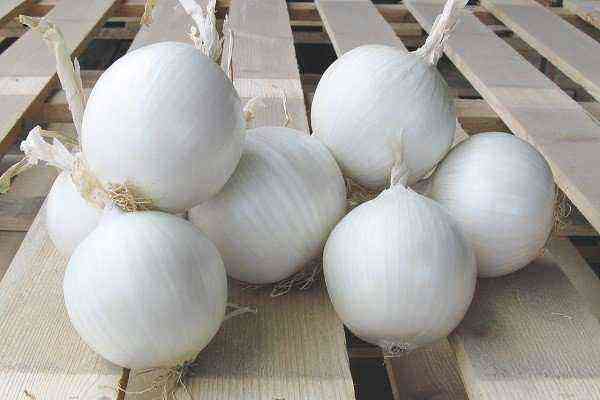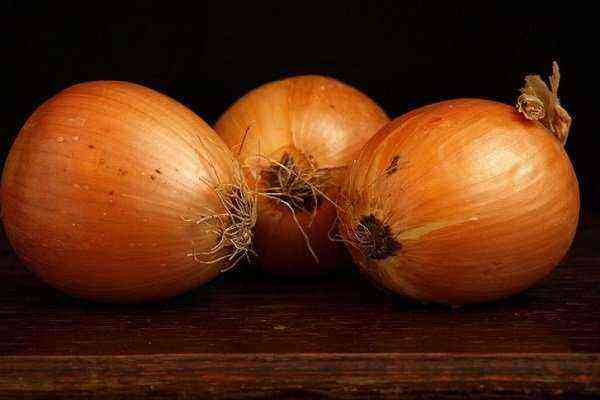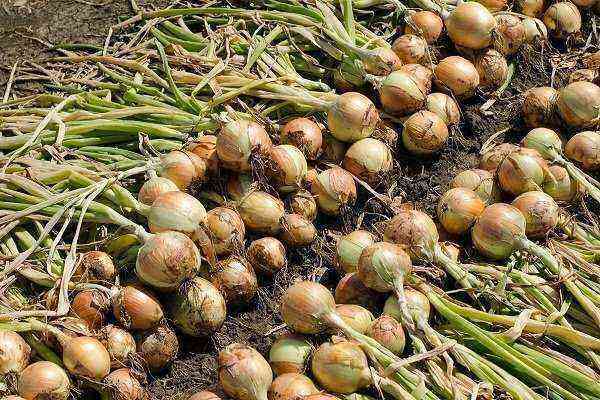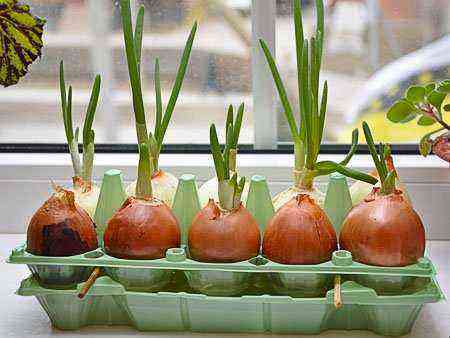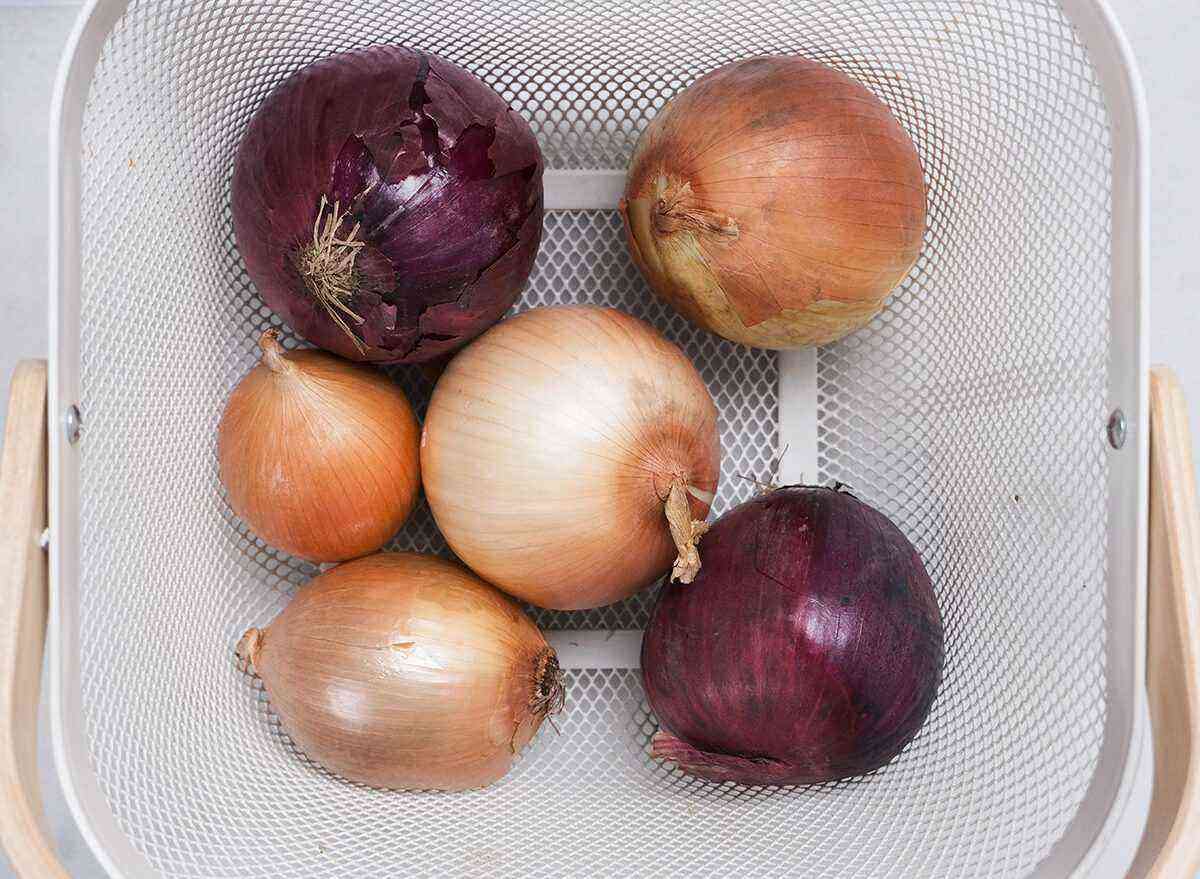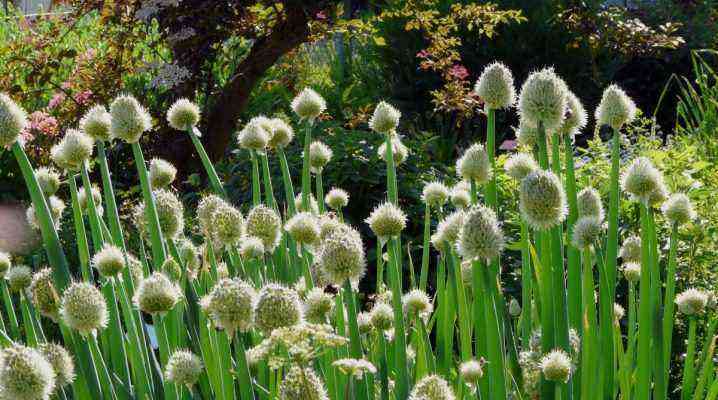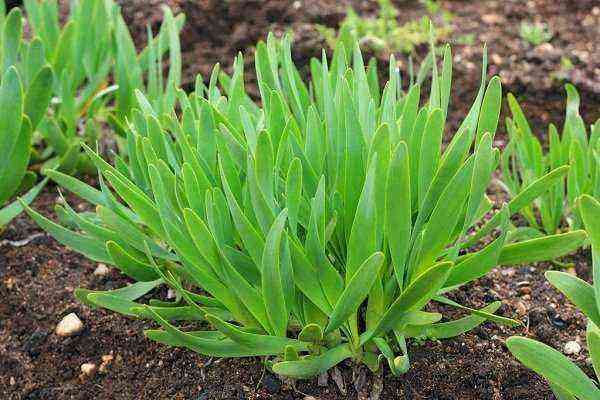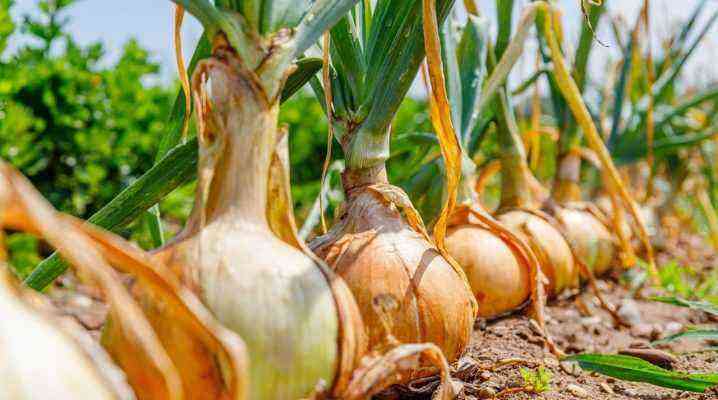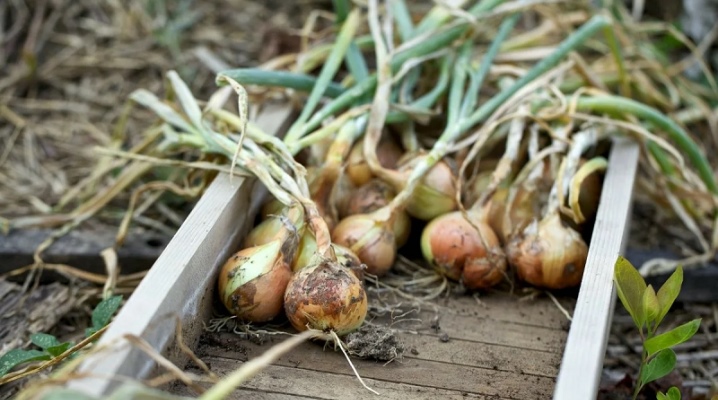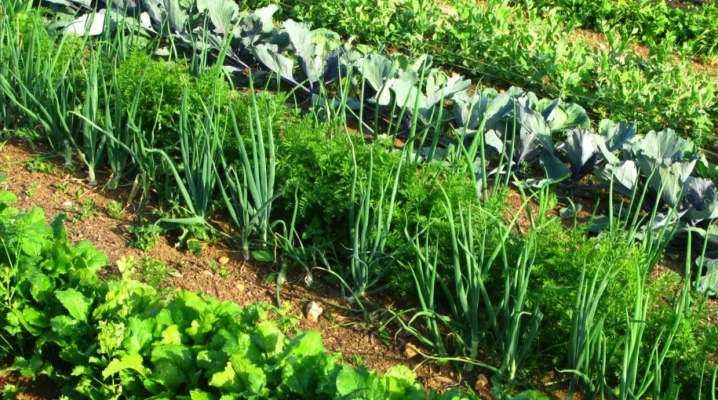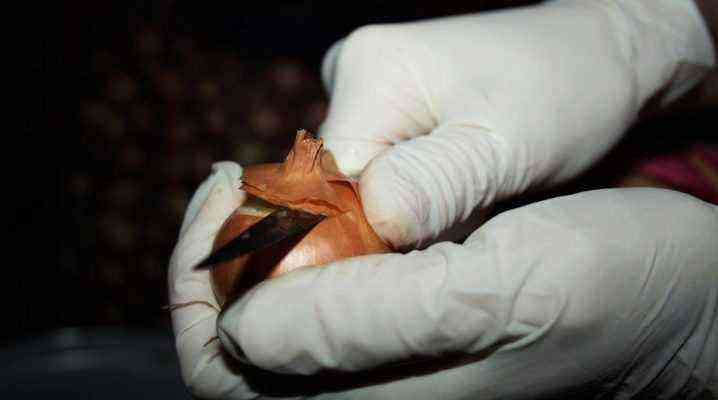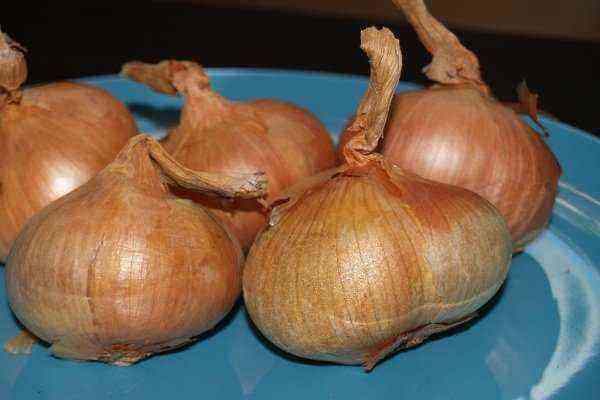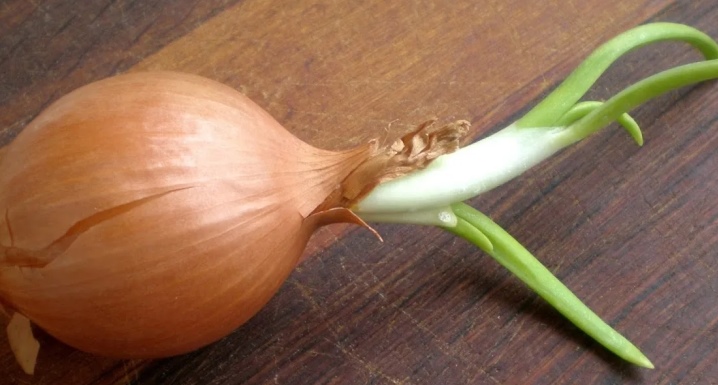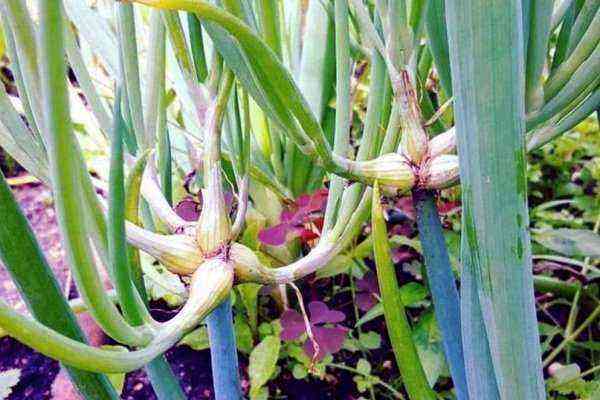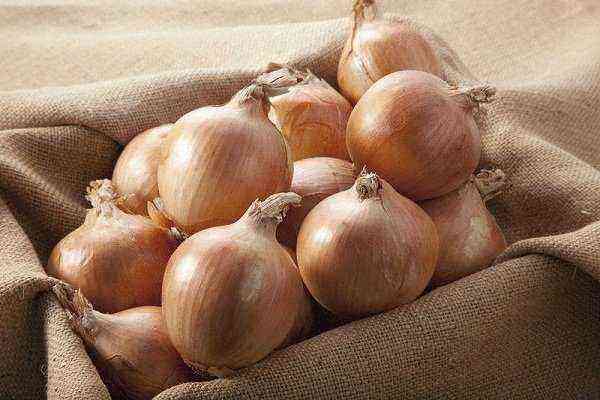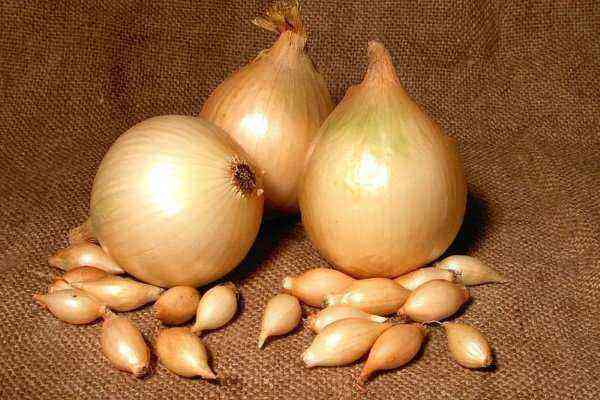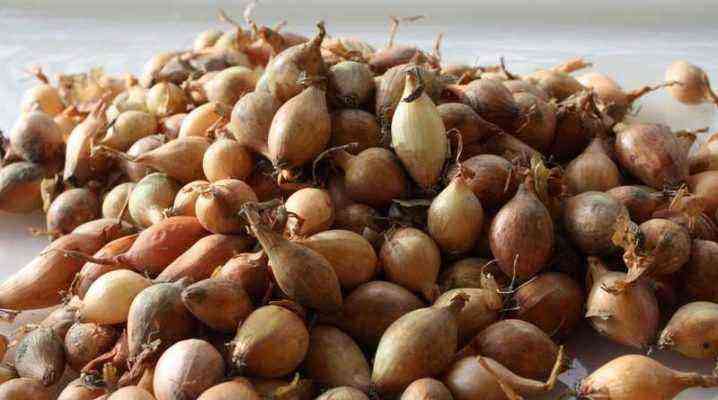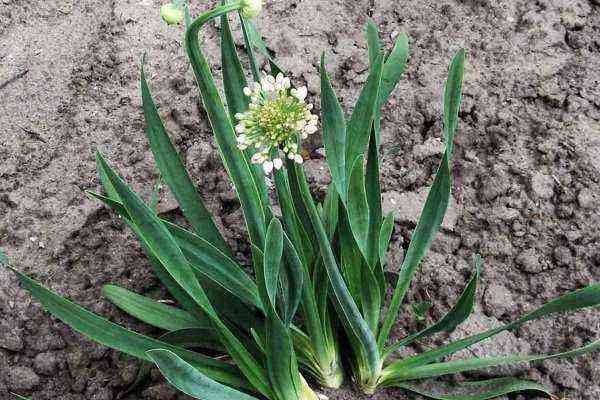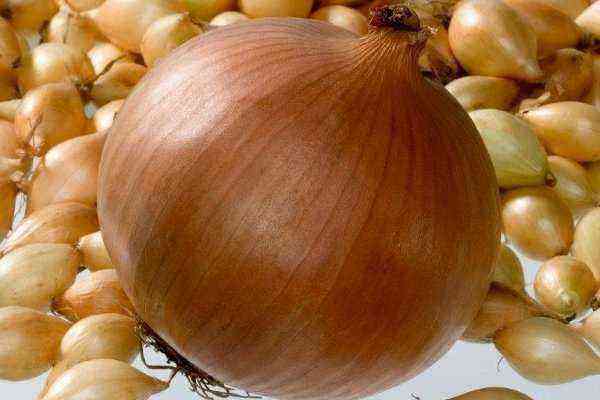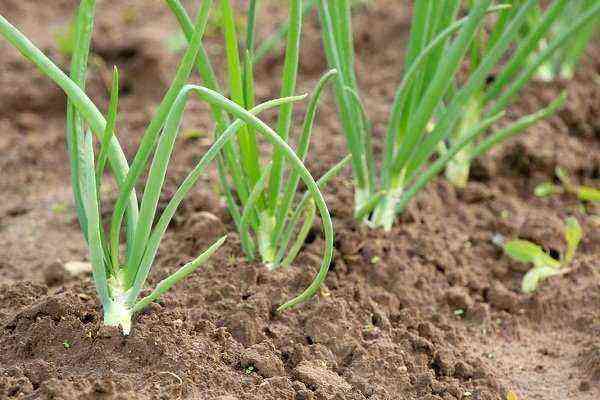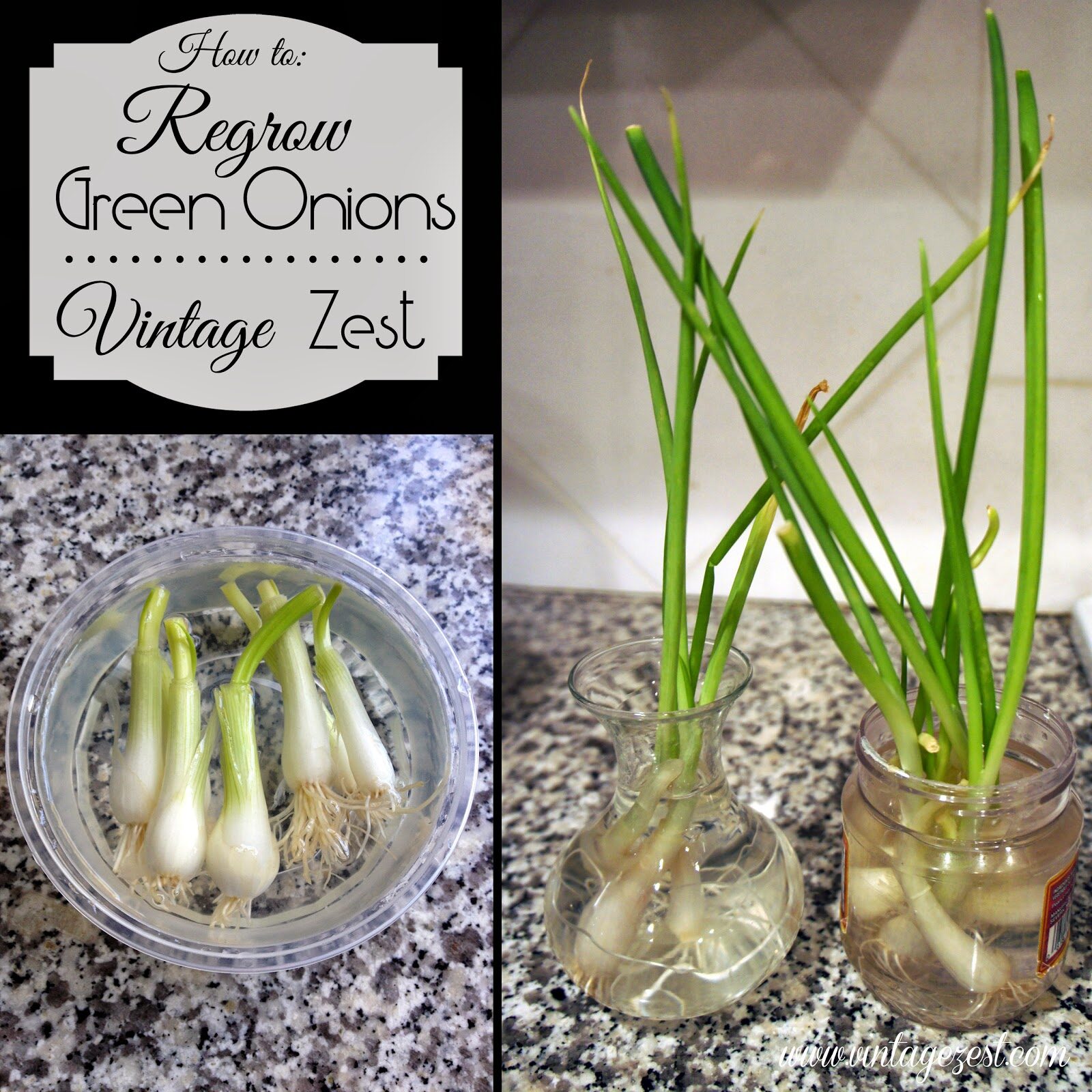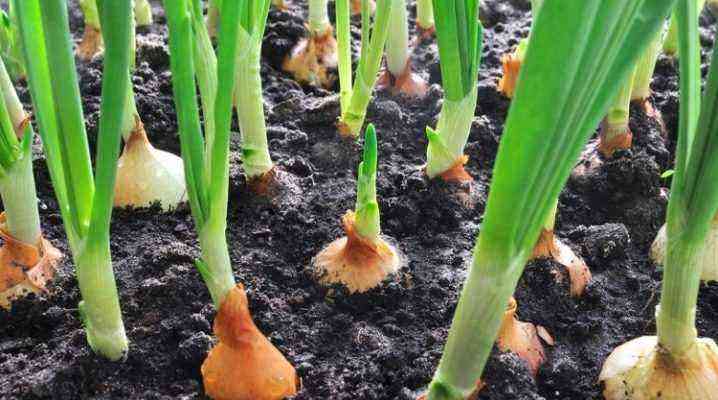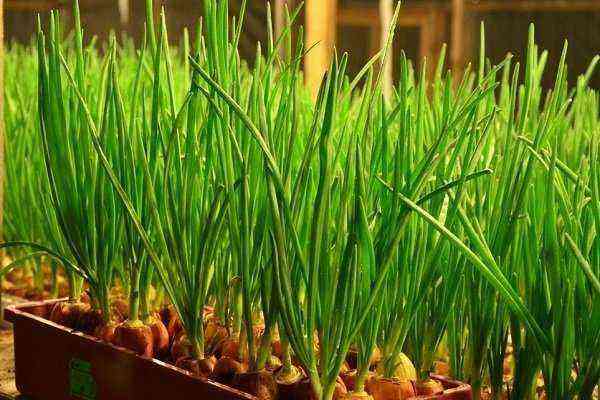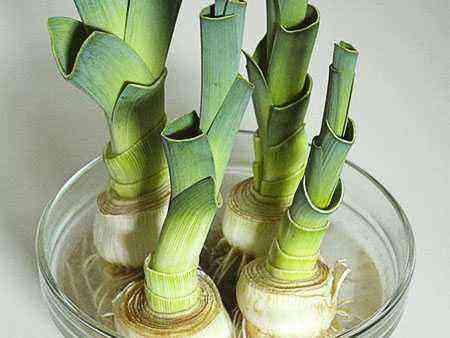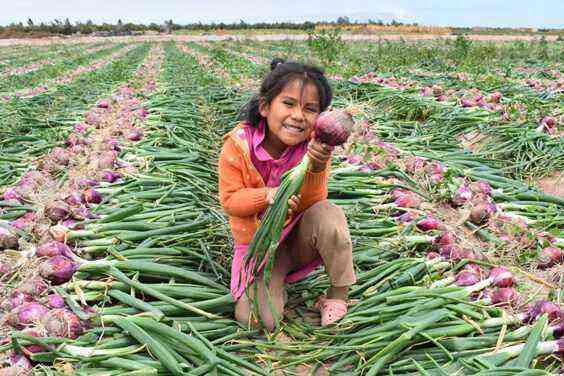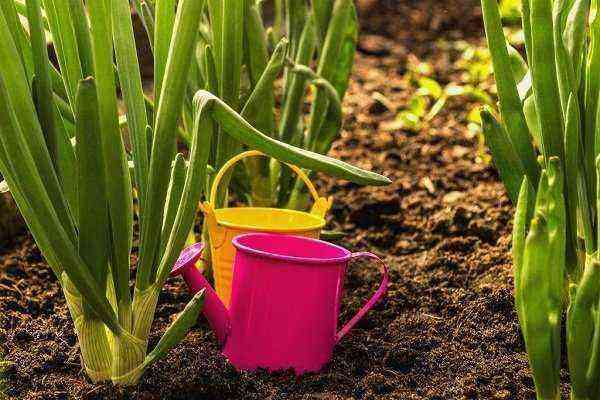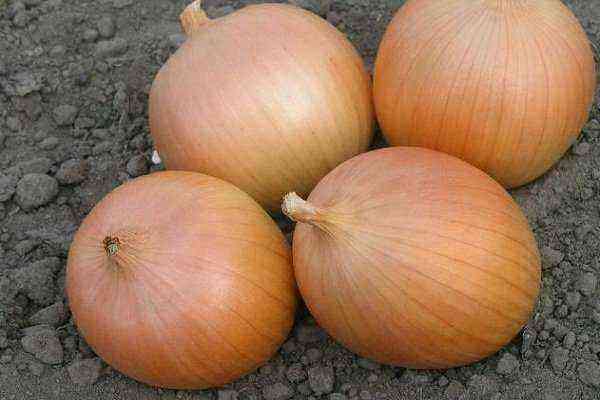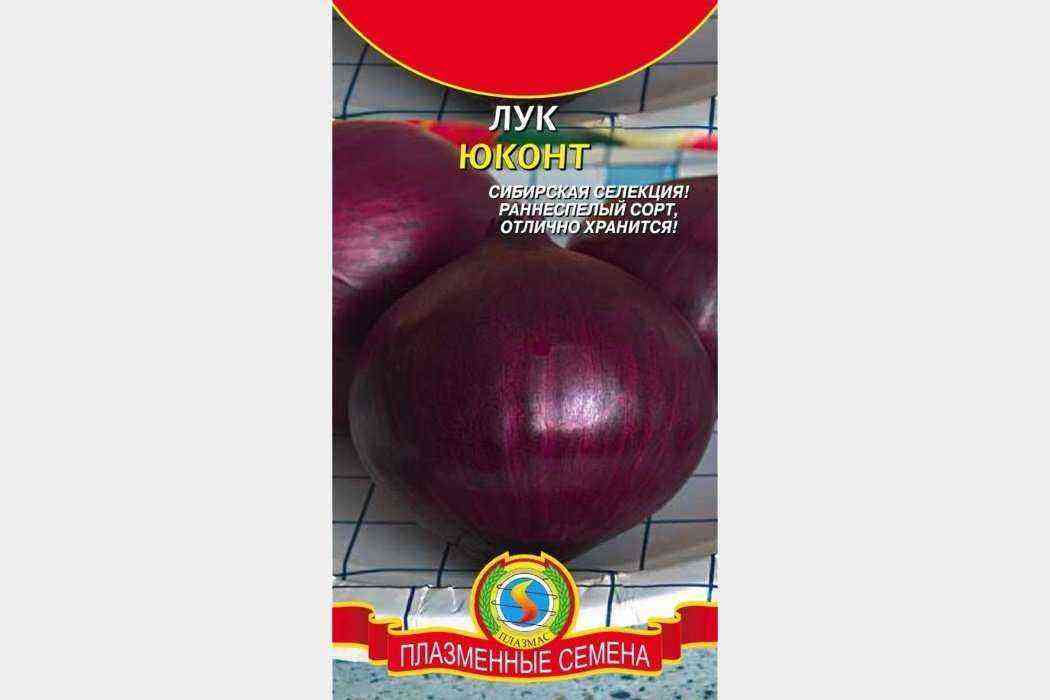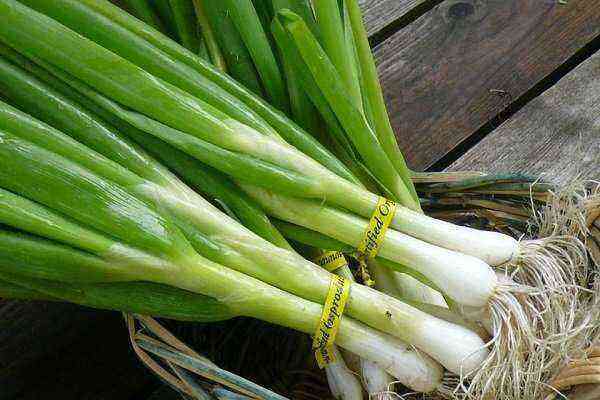Onions are an important economic export crop that generates a profitable income for farms. Onions are used in human nutrition, medical purposes and mummification since early times. A decree was found on the temples of the ancient Egyptians more than four thousand years BC, as mentioned in the heavenly books. Onions are distinguished from other crops that they grow In all climatic regions of the world, but there are distinct regions in its growth, such as Egypt, Spain, the United States and Japan. Onions reproduce by seed, and onions are a two-year-old plant, which gives the bulb crop in the first growing season (the stage of bulb production) and the seeds are formed in the second growing season (the stage of seed production). The pollination is mixed with insects, and onions are grown either singly or loaded on other crops and fruit trees.
Bulbs are produced in three ways:-
1 – The method of seedlings (wick onions).
2- Direct planting of the seed.
3- Follicles:-
A – production of follicles.
B – the productivity of onions from the follicles.
Production of onions by seedling method “wick onion”
# Date of planting planting:
Winter lugs are planted in Upper Egypt during the period from mid-August to the end of September. As for Lower Egypt, they are planted from the beginning of October until the end of November.
# Suitable soil:
In the nursery, it is taken into account that it is light yellow or heavy and free of salts, and the proportion of calcium in it does not exceed 10% so as not to crack the surface of the soil and lead to dryness of the roots and easy to root seedlings without causing damage to them. It must also be free of weeds and diseases, especially white rot and root disease Pink and charred, taking into account the lack of municipal fertilization, and it is important that the nursery has a permanent source of irrigation away from the heaps of municipal fertilizer to avoid infection with the borer.
Giza 6 Mohsen:
It is cultivated in the governorates of Upper Egypt, especially in the winter season. The bulbs of this variety are golden yellow in color and flat in shape. They are distinguished by the quality of storage and validity for export and drying. The variety is not available in Lower Egypt.
Giza 20:
It is cultivated in Lower and Upper Egypt governorates in the early winter and summer seasons. It is characterized by abundant yield and superior quality in storage, and the color of its bulbs is darker than the previous variety.
* Shandwell 1:
The variety is under registration and is grown in the governorates of Upper Egypt. It is early ripening and suitable for early export, as it is about two weeks earlier in maturity than Giza 6 Mohsen, and its bulbs are yellow in color and have a flat shape.
- Al-Buhairi Al-Ahmar (Al-Tantawi):
A class under registration, the color of the crust and the flesh is red, and it is found in the sea face and is not suitable for drying, and it is exported to the Arab countries
This method is followed in heavy and light yellow lands, and the soil must be smoothed and settled well.
The lands are divided into basins with an area of approximately 3 x 4 m, and the seeds are planted in a house and covered with a light cover with a dose of soil, and the cultivation is at a rate of 40-45 kg of seed per acre.
The land is planned at a rate of 14 lines / two reeds from Bahri to Qibli so that the two blades are exposed to equal temperatures, and the seeds are planted on the eastern and western blades, sedimented in two streams in the upper third of the line, and covered with a light cover of soil. The planting is at a rate of 30 kg of seed per acre.
It is followed in heavy yellow lands and terraces are one meter wide, and cultivation is done either in the seedbed or in lines. This method facilitates manual purification of weeds and uprooting seedlings, and cultivation is at a rate of 30 kg of seed per acre.
It is followed when planting nurseries in large areas in light yellow sandy lands. This method requires smoothing the land and leveling it well. The cultivation is done using manual or mechanical staplers on dimensions of 10-15 cm between the lines, and this method is characterized by using a low rate of seeds about 20 kg seed per acre. The land is not divided into basins in the case of sprinkler irrigation, but if the irrigation is by immersion, it is divided into basins whose area is commensurate with the degree of levelness of the land.
# irrigation of the nursery
Irrigation of cultivation is carried out on the cold so that the irrigation water does not wash away the seeds, especially in the case of cultivation in basins, and until the water reaches the seeds with rays. 3-4 days and take into account not to leave the soil cracking so as not to damage the seedlings, repeat irrigation after that every 5-7 days, and stop irrigation about 7 days before the seedlings are uprooted.
# Fertilization in the nursery
Phosphorous is added at a rate of 30 kg F2A5 / feddan or (200 kg mono superphosphate) / feddan during the service. As for nitrogen, it is always preferable to use ammonium sulfate or ammonium nitrate, and nitrogen rate is 60 kg / feddan. Planting in lines in two batches in the valley lands, the first after 20 days of planting and the second after 15 days from the first. In sandy lands, the rate increases to 90 kg of nitrogen per acre in five batches (the first when planting, the second after 15 days, followed by a batch every week).
# Weed control in the nursery
Great attention should be paid to weed control in the nursery, and manual resistance is always preferred as long as possible while avoiding trampling and mulching the seedlings. As for chemical resistance, it is sprayed with Joule 24% at a rate of 1 cm 3 / liter of water after the age of 21 days, or spraying the soil before planting the nursery with 50% stomp At a rate of 1.7 liters / acre.
# Nursery pest control
– If tunnels from the excavator are observed, the nursery land is treated immediately after the planting irrigation of the nursery and before sunset with a poisonous bait consisting of (1.2 liters hostathione + 15 kg of corn grits or rice fraction) and distributed regularly.
With regard to preventive spraying, it is carried out in early nurseries after 30-45 days of planting. As for late nurseries, one spray is given against small onion fly and thrips with 50% octac pesticide at a rate of 500 cm / 3 liters of water / acre with the motor, or 100 liters of water by hand sprayers.
# Uprooting a seedling
Seedlings are uprooted after about 50-60 days in early nurseries, and after about 70 days in late nurseries.
What is important is that the seedlings be the size of a pencil and not have formed heads (fallen or oval), as they increase the percentage of double bulbs and melons. It is also taken into account to exclude thin seedlings infected with the small onion fly and fungal diseases, especially white rot and pink root disease, as well as wounded and broken seedlings. In the event that the seedlings reach the appropriate size, and after sorting the seedlings, about a third of their vegetative growth can be trampled and tied in small bundles (100 seedlings) and placed vertically in a dry, shaded place.
It can be preserved for 2-3 weeks until the permanent land is prepared, with the need to exclude seedlings that formed heads during this period.
# suitable soil
It is preferable to be light yellow or heavy and can also be planted in sandy or clay lands, and the soil must be free of salt and alkaline, and the proportion of calcium should not exceed 10% so as not to affect the shape of the resulting bulbs, and the soil must be free from white mold disease, and the root pink;
# Planting date:
Cultivation begins in Upper Egypt from mid-October to mid-November, while in Lower Egypt it can be planted starting from the first of December and in late cultivations and loading extends to] the end of January and early February, and there should be no delay in that.
# farming methods
– Agriculture in brief
This method is followed in the lands of Upper Egypt by leveling the lands well and dividing them into segments (according to the level of the land) and qni, then planting is carried out in vertical lines in the direction of the cannula by opening the line and then stacking the seedlings at a distance of 7-10 cm between the sapling and the other and then covering the plants by raising the soil Thus, it is possible in this way to plant 36-42 lines in the two reeds.
– Agriculture on the lines
The land plans at a rate of 14 lines in the two canes, and the planning is from sea to tribal, because planning in the opposite direction (from east to west) leads to irregular heat distribution on seedlings and thus to a large percentage of wheat in seedlings exposed to low temperatures and seedlings are planted at a distance of 7-10 cm On both sides of the line in the upper third and the soil is dry, it is also possible to plant in the presence of water, and in the case of loading onions on cotton, seedlings are planted on the unemployment feather and at the top of the line. to grow cotton on it.
#Treatment of seedlings in lands infected with white rot
Despite the preference not to plant a field infected with white rot, when necessary, it is necessary to treat the seedling before planting it with Plant Guard at a rate of 60 cm / liter of water.
1- The seedlings are tied in small bundles (about 100 saplings) that are loose, provided that their bases are in one level.
2- Dip these bundles in the suspension of the biological compound.
3- Submerge the seedlings for 5-10 minutes with the addition of an adhesive such as Triton 1956 or gum arabic.
4- After dipping, lift the bundles and drain well, and then spread the seedlings to dry.
5- It is taken into account not to place the seedlings under the armpit of the worker so as not to lead to the removal of the pesticide stuck to the seedling.
This treatment leads to resistance to diseases of pink root, neck rot, base rot, in addition to white rot, during the growing season.
When Trichoderma fungus granules are available, they can be used to biologically resist white rot disease, at a rate of 80-100 kg per feddan in the belly of the line when seedlings under the seedlings, and chemical pesticides are not used in this case.
# Fertilization:
It is preferable not to use municipal manure in order to avoid bringing more weeds and disease germs to the soil, especially newly reclaimed soil. Fertilization depends on the chemical fertilization program (nitro, phosphorous and potassium), and decomposed organic fertilizers and compost can be added.
A – In the yellow clay lands, 45 kg of F2A5 is added per feddan with service operations. As for nitrogen fertilizer, 90-120 nitrogenous units are added in two batches after a month and two months of cultivation, respectively.
B – In sandy or light yellow lands, 45-60 kg of F2A5 or (300-400 kg of superphosphate) / feddan is added with the service, and in addition to this, 50 kg of potassium sulfate 48% is added with the service.
As for nitrogen, it is added at a rate of up to 150 kg / feddan, to be added in small, increasing batches (usually giving irrigation with fertilizer and the next without fertilizer). And there is no economic justification for increasing nitrogen fertilization than before.
Also, nitrogen fertilization should not be delayed until late February in Upper Egypt, so as not to delay ripening.
# irrigation
Onions are sensitive plants for irrigation, so the irrigation periods should be regular, and the plants are not thirsty and then irrigated, because this exposes them to an increase in the percentage of double and peeled bulbs. The irrigation periods depend on the type of soil. In the clay lands, they are almost every month. As for the sandy and light yellow lands, this period is shortened according to the needs of the plants. It is necessary to prevent irrigation of plants a month before harvest in muddy lands and two weeks in sandy lands in order to avoid the presence of argan bulbs.
- Ripening, scaling and scaling
- The crop is considered mature when about 50% of the throne is dormant, and rooting before this stage leads to the large presence of green onions with thick necks, which leads to infection with fungal diseases, and leaving the bulbs without cutting after this stage leads to the appearance of the peeled onion and to infection with black mold. The base rots and the bulbs are exposed to smashing the necks, which leads to their infection with neck rot and the large onion fly. It helps to lock it and not be exposed to fungal diseases and insects, and the scalding process takes about two to three weeks, depending on the weather and temperature.
The seed is sown directly into the permanent field starting in mid-November.
# Appropriate items
In the early cultivations, it is preferable to use the onion variety Giza 6 Mohsen, while in the late cultivations in Wajja Al Bahari, it is preferable to use the Giza 20 variety.
#proper land
The suitable soil is light yellow or sandy and agriculture should be avoided in limestone lands because the lands with calcium content of more than 10% hold together after irrigation and are solid and affect the germination of seeds and the formation of bulbs, which leads to the formation of compressed (distorted) bulbs, which makes it difficult to uproot the bulbs after their maturity. The land should be free of diseases, especially white rot, smut and base rot, and not infested with weeds.
# seed rate
An acre needs 1 kg of seeds to be planted using a special planting machine, taking into account the treatment of seeds before planting.
#Prepare the land for farming
Care must be taken to prepare the land by plowing it well and then creeping well so that it becomes smooth and completely flat. If laser leveling can be used, it is preferable, especially if irrigation is by immersion. This is divided into longitudinal slices so that the width of the slide is similar to the width of the lining machine used or its multiples so that the cultivation is done easily and in In the case of cultivation under the sprinkler irrigation system, there is no need for division or the establishment of pits and joints, as well as in the case of laser leveled land.
# farming method
Cultivation is carried out using special agricultural machines, so that the used machine is calibrated according to the mentioned seed rate, bearing in mind that the distance between the lines is 20 cm.
# irrigation
It is preferable to use sprinkler irrigation in new lands, and attention should be given to irrigation, especially during the germination period, so that irrigation is done every two or three days so that the soil will always remain wet until germination is complete. Two weeks before Tkulai bulbs in the sandy lands.
# fertilization
Single superphosphate is added at a rate of 100-150 kg of Mazafedan with the service of the land, and potassium sulfate is added at a rate of 50-100 kg/acre at Al Mahayah irrigation, while nitrogen is added at a rate ranging between 70-90 kg of nitrogen/acre added in two batches, the first at Al Mahayah irrigation and the second after about 30 days from The first batch, preferably using a form of ammonium sulfate fertilizer 20.6% or lime nitrate 15.5% or ammonium nitrate 33.5%.
# Harvesting, processing and packing
When the crop is ripe, the plants tend towards the bulb neck area and the bulbs begin to be harvested when the slope of the thrones is about 50% and the plants are taken off by hand or using appropriate harvesting machines. A dry place in a vertical position and adjacent in rectangular narrow widths with the side of the arches covered with soil so that the outer bulbs are not affected by sunlight and the plants are left for 10 days, then the thrones and roots are cut and the sorting is done. Thrones The bulbs are spread in the field for two days until the petioles are completely dry and closed, and then packed in sacks for marketing.
Before conducting the process of producing bulbs from bulbs, we must first review how bulbs are produced.
Bulbs are used in the production of onions and green onions. They are also used in pickling.. Bulbs were produced by cultivating part of the bulb or small onions as seeds to obtain bulbs. But the modern trend now is to grow this crop from small bulbs (8-20 mm), which results in a crop characterized by a low percentage of yield, especially wheat.
First: follicle production
* Planting date
The seeds are sown in late January to mid-February.
The production of bulbs is suitable for light yellow or sandy soil, and agriculture should be avoided in limestone lands, where they hold together after irrigation and are solid, which leads to the formation of bulbs, with which it is difficult to reduce the bulbs when they are mature. .
* Preparing the land for cultivation
The preparation of the land varies according to the cultivation used. When following the method of manual cultivation, the land is irrigated before planting (Kadaba irrigation) and when plowed well, then a good settlement is made and divided into small basins to control the irrigation process. Or twice, then it is done and the land is divided after that by means of the transverse concrete to tighten the irrigation, but when planting under the sprinkler irrigation system, the land is leveled as much as possible and does not resist the patches or separators.
# seed quantity
– An acre needs 20-25 kg of seeds to produce bulbs of the appropriate size (8 mm-20 mm). The seeds can be treated with any fungal disinfectants as mentioned in the previous cultivation method, in the case of lashing cultivation. In manual cultivation, cultivation is carried out at a rate of 30 kg in the case of cultivation On lines or at a rate of 40 kg seeds in the case of scattered cultivation.
Irrigation should be as regular as possible so that plants are never exposed to thirst. In the case of planting in sandy soil and under the sprinkler irrigation system, good care must be taken during the germination period so that irrigation is done every two or three days so that the soil is always wet – then irrigation continues regularly, and irrigation generally before Take off the follicles by about two weeks.
In lands, superphosphate fertilizer is added when preparing the land with 150 kg, and nitrogen fertilizer is added in two or three batches, the first after planting about 21 days, then a batch every 10-15 days so that 60-90 nitrogen units are added according to soil fertility. In new and sandy lands, 150 kg of superphosphate is added. 50 kg potassium sulfate before the last creep. As for the nitrogen fertilizer, 120 nitrogen units are added, taking into account the increase in the number of batches as much as possible and the reduction of the batch amount so that the plant gets the greatest possible benefit (irrigation with fertilization and irrigation without fertilization).
Harvesting is usually done by plucking by hand in late April or early May
So that the plants and their green thrones can be uprooted without losing the bulbs in the soil. As for uprooting with harvesting machines, the bulbs are left until the crowns are completely dry, then the uprooting takes place after that.
After harvesting the bulbs manually, they are placed in trowels and left for two weeks until complete dryness, taking into account the constant stirring of the stalks until the thrones are completely dry, then the bulbs are rubbed and cleaned from the remnants of the thrones and packed in bags of 25 kg, taking into account that the bulbs are not left packed in the sacks for a long time, but must be taken into account when Storing them should be placed individually in an airy and shaded place with constant stirring. In the case of automated harvesting, the bulbs are cleaned immediately after harvest and the sand and weed residues are disposed of, then they are packaged and transported to the place of cultivation.
Onions are characterized by several advantages:
Early ripening of the crop, thus avoiding white rot disease, which is most severe in late February.
Obtaining bulbs at a time when the need for bulbs is great, as the local market is almost free of bulbs, and thus the markets can be flooded with fresh onions.
– Low production costs in general, as the price of the bulbs used in agriculture is less than that of seedlings in the case of seedlings, as well as the low costs of prevention, as this crop does not need more than three preventive sprays.
It is possible to fill the need of drying factories and continue working in them by using the bulbs resulting from this crop.
By following an intensive program of breeding and agricultural transactions, it is possible to reach this crop to the field of export, especially since it is produced at a time when there are few fresh bulbs in the global market.
In order to produce a good crop of bulbs grown from bulbs, follow the following:
# suitable soil
The production is good in light yellow, black and sandy soils that have a low percentage of calcium so that the collected bulbs are not deformed by soil pressure on them. The pH of 6.5 is the appropriate degree for the growth of bulbs. The land must be free from salinity or low in salinity and not infested with weeds.
Bulbs from mid-August to late September. Late planting leads to an increase in the percentage of wheat, as well as to a clear delay in ripening.
The land is plowed well and then crawls at a rate of 14 lines in the two stalks, taking into account that the direction of planning is from sea to tribal, and cultivation is done on the eastern and western blades, and this clearly affects the percentage of germination.
- Seeding rate and cultivation
An acre needs about 250 kilograms of follicles with a diameter of 8-16 mm, so that the bulbs are stitched onto the two blades at a distance of 7-10 cm between the bulb and the other, at a depth of 2-3 cm, on the upper third of the line, either in the presence of water or in dry conditions. Be as cold as possible.
*irrigation
Onions are crops that are very sensitive to the quantity and regularity of irrigation. After giving the land irrigation, the water is irrigated after about a week, as this helps to complete germination in a good way, and irrigation must be regular after that according to the needs of the plant and the condition of the land, and taking into account that irrigation is prevented before the harvest about three weeks or even a month The vegetative growths that cause an increase in the thickness of the neck of the bulbs are not renewed, and in general, regular irrigation must be taken into account throughout the growth period.
Phosphate fertilizer is added when preparing the land and before planning at a rate of 150-200 kg of superphosphate. As for nitrogen fertilizer, it should not be exaggerated, as exaggeration in it leads to delaying maturation and increasing vegetative growth, and nitrogen fertilizer is added at a rate of 75 nitrogen units in two batches, and it must be taken into account to finish it early so that the batch is added The first batch is about 21 days after planting, and the second batch is three weeks later. In the case of sandy lands, the number of batches can be increased until the highest rate of utilization of plants occurs. It is preferable that the nitrogen fertilizer be in the form of ammonia sulfate 20.5% because of its acidic effect that suits the growth of onion plants, and also because The sulfate is absorbed slowly and is not lost with irrigation water, especially in sandy lands. It is also possible to use nitrogen fertilizer in the form of ammonia nitrate 33.5%.
*Harvest and preparation
Harvesting is done after the bulbs are fully formed and when 50% of the thrones are dormant. It is taken into account to put the bulbs produced in a trough in a dry place so that they cover the bulbs with their thrones and backfill on the sides of the onions to shade them. Then they are left for 15 days until the necks dry and cut so that the length of the neck is 2 cm, taking into account that the cutting is not unfair Which helps to infect fungi such as neck rot or store bugs, and after cutting the onions, they are left in the air to dry for two days before they are sorted and packaged.
The success of onion production depends on the presence of pure seeds identical to the variety, as each variety is characterized by special characteristics that distinguish it from other varieties, and this requires care to select the bulbs that are used as seeds for the production of seeds in terms of shape, size, color, freedom from diseases, abundance of the crop and other desirable characteristics.
Seed production fields must be chosen in good lands free from diseases and weeds, as well as taking into account the stricter technical supervision of the seed production fields throughout the different stages of growth and excluding foreign plants and taking into account the isolation distances to avoid any confusion between pure varieties with good qualities and local strains that may have characteristics undesirable.
To obtain onion seeds for seed, the seeds are first planted to obtain bulbs, and then the bulbs are planted to obtain the seed crop. This method takes two years.
– # Seed selection:
– The selection process begins from the field of bulb production, where unwanted plants that do not conform to the variety are removed, excluding exotic plants that are violating in the form of vegetative growth and color, with thick necks, as well as those that are late in maturation. The store The process of sorting and selecting the bulbs that will be used in seed production is carried out.
The bulbs that have the following defects are excluded:
1 – double open
2 – Double locked.
3- Violation of color and type.
4 – Fish neck bulbs.
5- The bulbs are irregular in shape.
6 – boiled onions or arakanah.
7 – Bulbs that have begun to sow.
8 – Broken, injured or peeled bulbs.
9 – bulbs infected with diseases and insects
And take into account the cultivation in a healthy land free from white rot, smut and pink root.
The seeds are dipped before planting in Topsin pesticide at a concentration of 2 per thousand to resist neck rot disease, but if the cultivation is in a land infected with white rot, it is dipped in somecyclics at a concentration of 50 per thousand for at least three minutes, and this also helps in resisting neck rot and basal rot disease and it is possible to use Ronilan in the absence of Sumisclex at a rate of 20 g/L or immersion of the seeds in Plant Guard solution at a rate of 3 liters/50 liters of water.
environmental needs
the soil
It works in most types of soil and prefers good fertile soil. Choose soil that is free of diseases such as white mold and pink root and that is free of weeds.
# the weather
Onions need low temperatures at any stage of their growth in order to encourage the production of light-bearing mothers, and then to relatively high temperatures and low humidity in the last stage of growth, for the ripening of the seeds.
# Relay rate
Choose bulbs with sizes from 4-7 cm. In this case, an acre needs 1.5-2 tons of bulbs, and in the case of using large bulbs, an acre needs about 2.50 tons.
#Date and method of cultivation
The bulbs are planted for the purpose of producing seeds in November in Upper Egypt and in December in Lower Egypt. The land, after being well served, is planned at a rate of 12 lines / two reeds from east to west to plant bulbs on the sea side in the bottom of the line (where it is exposed to lower degrees of tractor to force it to take out the light-bearing ones) and then Fill it from the previous line so that it is at the end in the middle of the line, and the distance between the bulbs is about 25 cm, and it can be narrowed to 20 cm in the case of bulbs whose diameter is 4-5 cm.
This takes into account that there is an isolation distance between the field planted to produce seeds and any other onion field, a distance of about 3 km, in the case of producing seeds of more than one variety. I hold flowers and produce a bountiful seed crop.
# fertilization
Mono superphosphate (15% Fu 2 A 5) is added at a rate of up to 45 – 60 kg F 2 A 5 (300 – 400 kg mono super phosphate) per feddan after planning and before planting, while nitrogen is added at rates of 90 – 120 kg nitrogen per feddan in two or three batches So that the first batch is a month after planting, then the rest of the batches are added after about 3 weeks of each addition. Potassium can be added at a rate of 50 kg of potassium sulfate fertilizer per acre with superphosphate before planting.
# irrigation
Onions are plants sensitive to irregular irrigation, so neglecting irrigation leads to plants with weak vegetative growth and thus give weak light carriers. Irrigation is especially important during flowering, and neglecting it leads to a weak seed yield, small-sized seeds, and weak germination. Therefore, the onions planted to produce seeds must be irrigated regularly according to the plant’s needs. The period between irrigations is 20-25 days, as is the ideal period in the valley land, and the period in sandy lands is short to continue. Irrigation throughout the flowering period and prevented shortly before the harvest to prevent the dormancy of pregnant light.
- Harvesting and preparing seeds
Seed ripening begins in May and June when capsules begin to open and before dispersal begins.
The inflorescences are yellow (the color of straw), and at that time, the harvest should not be delayed so as not to lose the seeds by spreading. Also, it should not be harvested before that, and the color of the inflorescences is green because the seeds have not completed their maturity, which leads to a reduction in the percentage of germination and poor quality.
Harvesting takes place in the early morning, when the weather is very humid so that the seeds do not spread and lose.
The inflorescences are spread on special mattresses and exposed to the sun for 2-3 weeks with constant stirring so that they do not rot.
The average yield of an acre of seeds is from 2-4 ardebs per acre.
Onions must be planted in lands that are not infested with weeds, especially perennial weeds such as grass. .
In the case of severe infestation of weeds, chemotherapy is used. Broad and narrow-leaved annual weeds can be controlled by using one of the following herbicides:
1- Spraying the herbicide Topstar 80% wG at a rate of 250 gm / acre as a general spray on crop plants and weeds, after 7-10 days of transplanting.
2- Spraying with Joule 24% EG at a rate of 750 cm / 3 acre as a general spray on crops and weeds after 21 days of sowing.
3- Spraying with Stomp 50% EG at a rate of 1.7 liters / acre on the soil before transplanting (in the nursery) and after planting onions (in the permanent land) and before irrigating the cultivation.
4- Spraying the soil before planting with Triflex 48% EG at a rate of 950 cm 3 / feddan on soft soil and then stirring immediately after spraying and then planting.
1- The Digger
Onion seedlings in the nursery are exposed to the infection of the digger, as it gnaws in the roots in the nursery, and the injury results in yellowing and wilting of the leaves. It also affects the seedlings transferred to the permanent land, and it gnaws at the bottom of the neck under the soil, so the plant withers and dies. The digger can infect the bulbs formed with gaps or wounds, which leads to infection with soil fungi. Zigzag digger tunnels can be seen after irrigation above the surface of the soil.
1- Paying attention to agricultural operations by preparing the land, plowing and hoeing, and exposing it to the sun and natural numbers.
2- Remove weeds.
3- Not to overdo the organic fertilizer that is not decomposed.
4- Using the poisonous bait consisting of 1.25 liters of hostathion 40% + 15-20 kg of corn grits + 20-30 liters of water + 1 kg of black honey and mix well and leave to ferment and put a sip in the belly of the line after irrigation and at sunset.
2- cutworm
The larvae attack the onion plants in the field in February and March, where they gnaw the leaves above the surface of the ground or a little under the soil, where you see the leaves scattered above the surface of the ground around the hole, and the caterpillar at the bottom of the hole is black and arched.
1- Paying attention to hoeing and weed removal.
2- Using the poisonous bait consisting of 1.25 liters of Hostathion 40% or Dorspan 48% + 20-25 kg of soft rosette + 20-30 liters of water + 1 kg of molasses and mix well and leave to ferment and place a fold around the roots at sunset.
3- Cotton worm or green worm
The cotton leaf worm or the green worm infects the seedlings and leaves of onions and causes great damage to plants and damages them, as the larvae enter the tubular leaves of onions feeding their contents, which leads to the drying and falling of the leaves, which affects the yield and leads to its decline.
1- Not to plant nurseries or permanent land next to cotton or alfalfa as much as possible.
2- Not to load onions on cotton, and if this happens, attention must be paid to combating the cotton leafworm and common pests.
3- When the larvae of the cotton leafworm or green worm appear, one of the following compounds can be used:
A – 90% of the plant is at a rate of 300 g per acre.
B – Realdan 50% at a rate of 1 liter per acre.
C – Match 5% at a rate of 160 cm per acre.
D- Silicon 72% at a rate of 750 cm per feddan.
4- thrips onions
Thrips insects infect many families, the most important of which are cotton, alfalfa, wheat, barley, beans, lentils, cucurbits, flowers and others. severe injury.
The infection of thrips appears in the period from October to April, and the number of thrips decreases after that.
1- Paying attention to agricultural operations and strengthening plants to offset the effects of nutrition.
2- Patching the infected hollows.
3- Paying attention to the control of thrips when loading, as the thrips move from the loaded crop to the onion or vice versa.
4- Spraying with one of the following vehicles alternately when the number of people on the plant reaches 10.
– Super Masrona summer mineral oil – Super Royal or Xdoil at the rate of 1 liter / 100 liters of water.
– Somethon 50% at a rate of 1.5 liters / f.
Tocothione 50% at a rate of 1 liter/f.
Spraying is done every two weeks for 3-4 sprays.
5- small onion fly
The small onion fly infects the onion seedlings in the nursery and the field, and the infection causes the leaves to wilt and dry from the top to the base. Disk and come out of the bases of the leaves an unpleasant smell.
The infestation of this insect intensifies in the period from November to March of each year.
1- Early planting in September.
2- It is preferable to plant the seeds in the nursery in lines or lines instead of scattering them.
3- When transferring seedlings to permanent land, infected seedlings are excluded and destroyed.
4- After the nursery is vacant, the nursery ground is torn off and left for solarization to expose the insect phases to the sun and the natural numbers.
5- Periodic preventive spraying against the small onion fly when the infection rate reaches 5% of 3-4 sprays with the same anti-thrip program, which is a common treatment for it.
6- Big onion fly
This insect does not infect nurseries, and it infects onions in the permanent field only in early spring in March and April. The infection is characterized by yellowing of plant leaves and damage to the bulbs, becoming soft and rotting, as the infection continues in the store after the bulbs are uprooted and stored, and the larvae thrive in the soil near the affected plants or between the bases of the bulb leaves.
1- Collect infected plants and destroy them.
2- When uprooting, examine the bulbs and bulbs well and dispose of the infected.
3- Maintaining the cleanliness of the stores.
4- Spraying in the permanent field when the infection rate reaches 5% with the same vehicles and dates as in the small onion fly and thrips.
1- smut disease
It is caused by a fungus that lives in the soil or is associated with the roots. The fungus attacks the seed immediately after germination, leading to the death of the seedlings in case of severe infection. Its most important symptom is the deformation of the seedlings and the curling of the leaves as a result of the formation of a large amount of charred black fungi spores. The cracking of the infected tissues leads to the spread of germs by air and irrigation water. and infected seedlings.
# Resistance
Not to plant the nursery in a land where the disease has been prevalent for at least 5 years.
Planting at the right time helps to escape from injury.
Get rid of infected seedlings and burn them.
Attention to phosphate and nitrogen fertilization.
Treating the seeds before planting with one of the fungal disinfectants according to the recommendations of the Ministry’s control program, with the need to use an adhesive such as gum arabic with a concentration of 5%.
2- pink root rot disease
It is caused by a fungus that lives in the soil and attacks the roots and the discoid stem, which leads to not being noticed until the seedlings are uprooted. The infection leads to the coloration of the roots in pink or pink, then they dry up and die, and the plant forms new roots, then they get infected and die, and so on, which leads to the weakness of the seedlings.
# Resistance
Cover the soil for a month with plastic in the hot summer months.
Cultivation in a land where the disease has not previously appeared in an epidemic situation.
Sorting the seedlings well when they are transferred to the permanent land and excluding the infected from it so that it is not a source of transmission of infection with the disease.
4– Fusarium rot and seedling death
Severe infection leads to the death of seedlings before they appear on the surface of the soil, as well as root rot and the death of seedlings after their appearance on the surface of the soil. The infection can be transmitted to the permanent ground with infected seedlings, causing the appearance of base rot, whose symptoms are characterized by yellowing and wilting of leaves and ease of uprooting infected plants from the soil and fungal growth is seen White cotton on the base of the bulb without the presence of black stone bodies and this is what distinguishes it from white rot disease.
# Resistance :
Attention to phosphate, nitrogen and potassium fertilization.
Sorting the seedlings well when transferred to the permanent land, excluding the infected and burning them.
Paying attention to insect resistance, especially the onion fly.
Treating seeds before planting with Topsin at a rate of 2 g / kg seed, with the need to use an adhesive substance.
5- White mold disease
This disease is caused by a fungus that forms stone bodies that live in the soil for many years. The spread of this disease is suitable for low temperatures and high humidity.
# Symptoms:
Yellowing and wilting of leaves, which leads to the death of plants.
Ease of uprooting infected plants from the soil as a result of rotting and death of the roots and a white cottony fungal growth is seen when uprooting infected plants with the presence of small black stone bodies that are characteristic of the disease.
# Resistance :
Not to plant onions or garlic in the lands affected by the disease.
Not to plant bulbs or seedlings taken from fields contaminated with the disease.
Getting rid of infected plants by burning them and not throwing them into canals and drains or feeding livestock on them so as not to be a means of transmitting the infection to clean, disease-free lands.
Implementation of internal agricultural quarantine to prevent the spread of the disease from one region to another.
Leaving polluted lands during the summer months or covering them with plastic for 40 days after three days of irrigation (pulled), which helps to eliminate a large percentage of stone objects in the soil.
Not to transfer soil from polluted fields for use in making municipal fertilizer.
# chemical resistance
Treating the seeds with a guard compound at a rate of 3 liters / 5 liters of water / feddan.
Covering with plastic for a month in one of the hot summer months.
Dip the seedling with Folkor 25 cm/liter, then spray after 6, 12 weeks at a rate of 187.5 cm/100 liters of water.
Semsiki PFL pesticide at a rate of 20 g or 40 g / liter of water.
5- Downy mildew and purple stinger disease
A dangerous fungal disease on the vegetative system.
#symptoms
The appearance of a pale yellow spot on the leaves, then a gray vellus growth, as well as oval and round spots with overlapping circles, with a purple or violet center and a pale yellow edge, which leads to the drying of the leaves completely when the infection intensifies. Infection with downy mildew followed by the appearance of symptoms of purple stinging when the temperature rises during February and March.
# Resistance :
Burning the remains of the affected crop.
Follow an appropriate agricultural cycle.
Paying attention to irrigation, fertilization and cultivation in well-drained land.
# Preventive periodic spraying:
It is sprayed with one of the following compounds:
Copper galene 46% at a rate of 250 g / 100 liters of water or Ridomil Plus 50% at a rate of 250 g / 100 liters of water or mical or 70% at a rate of 250 g / 100 liters of water.
6- Neck rot disease :
It is caused by a fungus and the infection occurs in the wick onion at the end of the season, and the symptoms of the disease are not revealed except in the case of high humidity, and the infection usually unfolds in the warehouse or during shipment and export.
# Symptoms:
Small white spots appear on the greasy leaves that end with mold at the neck and the infection extends down the base side. A gray fungal growth is seen on the affected area and the bulb becomes like boiled.
# Resistance
Irrigation moderation while reducing the number of irrigations so that they do not exceed three other than the irrigation of agriculture during the season.
Weed control by using pesticides instead of hoeing, which helps to injure the bulbs.
Preventing irrigation at least a month before the bulbs are uprooted.
Uprooting bulbs at full maturity (50% slope) from the thrones.
– It causes wounds to the bulbs during extraction.
The necessity of scalding the bulbs in the yards for a period of 21 days in the case of low temperatures, and 10-15 days in the case of high temperatures.
Cut the petioles at a distance of 2-3 cm and leave them to dry well for 48-72 hours to lock the necks.
It is taken into account to sort the crop well before packing and to exclude the broken and injured bulbs so that they are not a source of infection.
– Store the bulbs in dry, well-ventilated stores at a low temperature.
